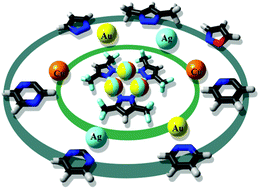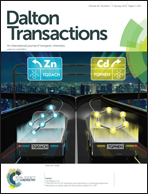Cyclic trinuclear copper(i), silver(i), and gold(i) complexes: a theoretical insight†
Abstract
The metal–ligand, M–L, bonding situation in cyclic trinuclear complexes, CTCs, of copper(I), silver(I), and gold(I) was investigated in terms of the energy decomposition analysis (EDA-NOCV) and natural bond orbitals (NBOs). The anisotropy of the induced current density (ACID) and magnetic response were employed to evaluate the effect of electronic conjugation and metal–metal interactions in CTCs. The EDA-NOCV results show that the M–L bonding is stronger in gold(I) than in copper(I) or silver(I) complexes. Au+–L bonds present an elevated covalent character when compared with Cu+–L and Ag+–L bonds. The NBO analysis confirms the elevated covalent character observed for Au+–L bonds, indicating that the ligand–metal donation, L → M, and the metal–ligand back-donation, M → L, are more stabilizing in gold(I) than in copper(I) or silver(I) complexes. Both ACID and the magnetic response calculations reveal that there are cyclic conjugations in the ligands and a strong diatropic ring current indicating the presence of aromaticity. However, there is no through-bond M–L conjugation between the ligands and the metallic centers, as indicated by the absence of a continuous anisotropy boundary surface involving M–L bonds.


 Please wait while we load your content...
Please wait while we load your content...